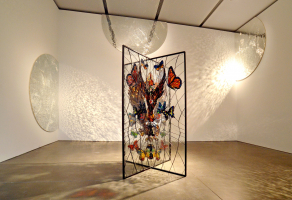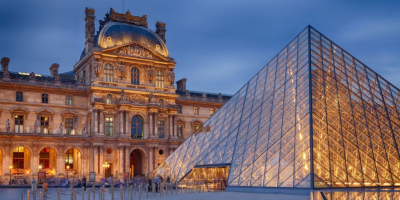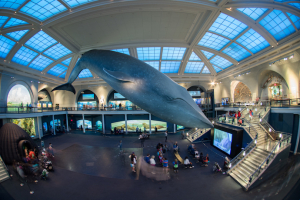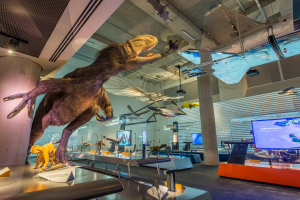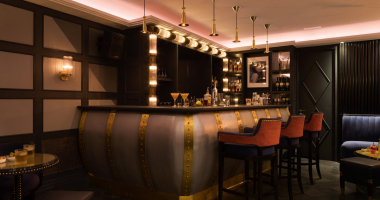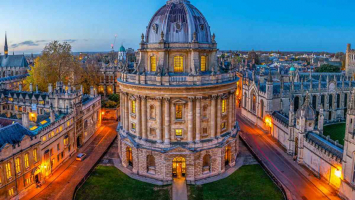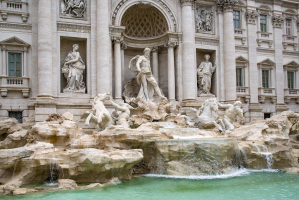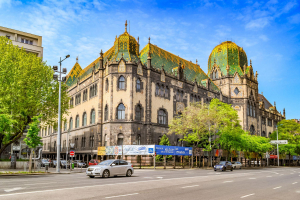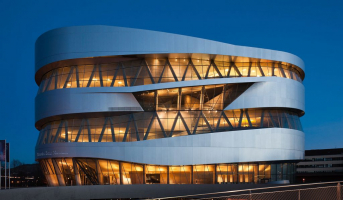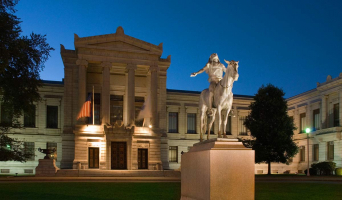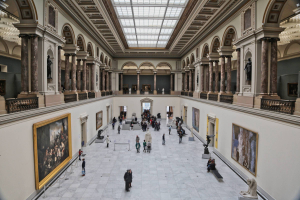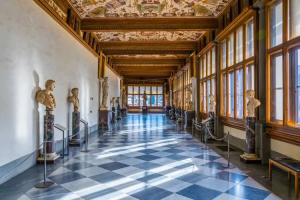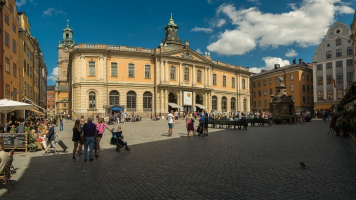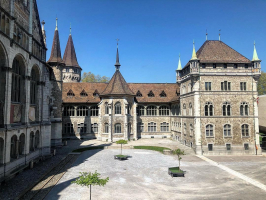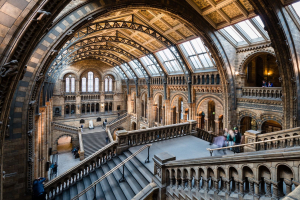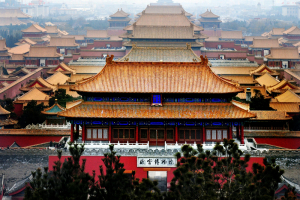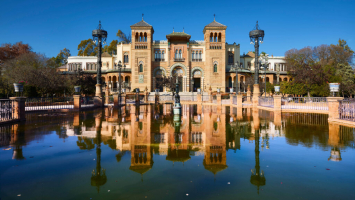Top 15 Best Museums in Europe
If you want to get a few new stamps on your passport this year, try visiting some of Europe's top museums. These world-renowned organizations provide something ... read more...for everyone, from ancient history to modern art. So, whether you're a fan of fine arts or simply want to visit some intriguing things, be sure to include these museums on your itinerary! In Europe, there are several excellent museums. Visitors to Europe should visit these museums since they provide a variety of things to see and learn. Here are the most popular museums in Europe.
-
Acropolis Museum in Athens is a must-see for anybody interested in ancient history. This museum is dedicated to showcasing all objects unearthed at the Acropolis and its surrounding slopes, dating from the Bronze Age through the Roman and Byzantine periods. Furthermore, it has some Roman and early Byzantine Athens ruins. The museum was established in 2003, and the Museum Organization was established in 2008. On June 20, 2009, it was revealed to the public. Over 14,000 square meters, over 4,250 artifacts are on display. The museum is a great complement to the Acropolis walking tour.
Dimitrios Pandermalis, Professor Emeritus of Archaeology at Aristotle University of Thessaloniki, chairs the Organization for the Construction of the New Museum. The Acropolis Museum is one of the world's most visited archaeological sites. On a 14,000-square-meter location, almost 4,250 artifacts are on show. Dr. Dimitrios Pandermalis, Professor Emeritus of Archaeology at Aristotle University of Thessaloniki, leads the Organization for the Construction of the New Museum.
The Acropolis Museum is a working archaeological site. The Acropolis Restoration Project has been trying to conserve this UNESCO World Heritage Site for almost a decade. Excavations are still being done on a regular basis, and fresh finds are being found. The Acropolis Museum also serves as a research and instructional facility. It offers educational possibilities to students of all ages, from kindergarten to graduate school. Except for Mondays, the museum is open daily. From November to February, it shuts at 3 p.m., and at 7 p.m. the rest of the year. Admission to the Museum is €12 for adults, €6 for students and seniors, and free for children under the age of 18.Location: Dionysiou Areopagitou 15, Athina 117 42, Greece
Website: https://www.theacropolismuseum.gr/en
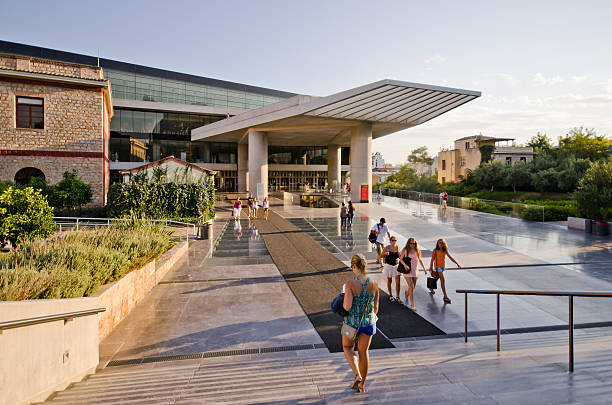
istockphoto 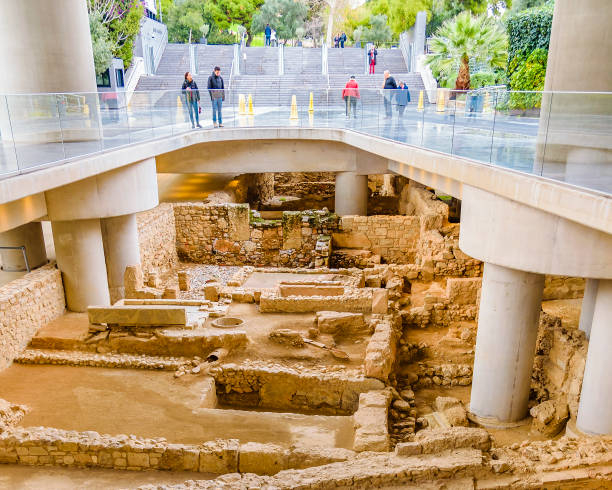
istockphoto -
Visit the Louvre Museum Paris, a famous monument in France, to observe the city's utmost beauty, lavishness, and style. This towering edifice is said to be the world's largest museum. It is situated within the majestic Louvre Palace and is located on the banks of the Seine. The Louvre Museum Paris houses an extraordinary collection of art that is divided into numerous divisions ranging from Greek, Etruscan, and Roman antiquities to Egyptian antiques, Islamic Art, Sculptures, and Decorative Arts.
The Musée du Louvre is housed in the Louvre Palace, which was built by Philip II during the late 12th and early 13th centuries. The Louvre Museum is the world's most visited museum and a historically significant structure in Paris, France. The Louvre houses two of history's most iconic works of art: the Mona Lisa and the Venus de Milo. It is a prominent component of the city's skyline and is located on the Right Bank of the Seine in the 1st arrondissement of Paris (district or ward).
The Louvre Museum is a must-see for anybody visiting Paris. Because of its wide range of artwork and antiques, it has something for everyone. The Louvre Museum is sure to astound and thrill, with everything from ancient Egyptian antiquities to paintings by Leonardo da Vinci. The medieval Louvre fortification may be located in the basement of the museum. The stronghold was converted into a royal palace in 1546, after it had become outdated as a defensive building. Except for Tuesdays, the Louvre Museum is open every day. From April to September, it shuts at 9:45 p.m., and at 6:45 p.m. the rest of the year. The admission fee to the Louvre Museum is €15 for adults, €7.50 for students and elderly people, and free for children under the age of 18.
Location: Rue de Rivoli, 75001 Paris, France
Website: https://www.louvre.fr/en
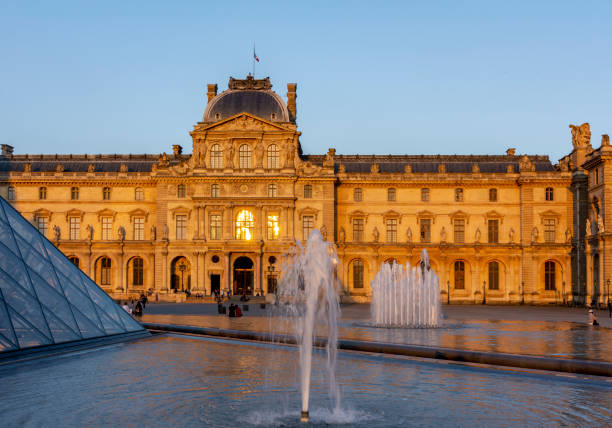
istockphoto 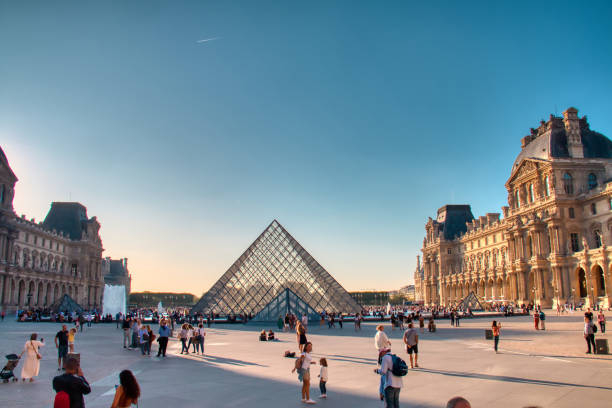
istockphoto -
The Orsay Museum is a museum on the Left Bank of the Seine in Paris, France. It is situated in the old Gare d'Orsay, an 1898–1900 Beaux-Arts train station. The museum's collection consists mostly of French art from 1848 to 1914, including paintings, sculptures, furniture, and photography. It holds the world's biggest collection of Impressionist and post-Impressionist masterpieces by artists like as Berthe Morisot, Claude Monet, Édouard Manet, Degas, Renoir, Cézanne, Seurat, Sisley, Gauguin, and van Gogh. Prior to the museum's establishment in 1986, several of these works were on display at the Galerie nationale du Jeu de Paume. It is one of Europe's largest art museums.
The museum received 3.2 million visitors in 2022, up from 1.4 million in 2021 but still below the 3.6 million attendances in 2019 owing to the COVID-19 pandemic. In 2020, it was rated fifteenth on the list of most-visited art museums. The Gare d'Orsay was a train station for just over 50 years until it was transformed into a museum. The Musée d'Orsay is one of the most popular tourist locations in Paris today, and with good reason. Because of its world-renowned art collection, the Musée d'Orsay is a must-see for any tourist to France. With the exception of Monday, the museum is open every day. From April to September, it shuts at 9:45 p.m., and the rest of the year at 6:45 p.m. Admission is €12 for adults, €6 for students and seniors, and free for children under the age of 18.
Location: 1 Rue de la Légion d’Honneur, 75007 Paris, France
Website: https://www.musee-orsay.fr
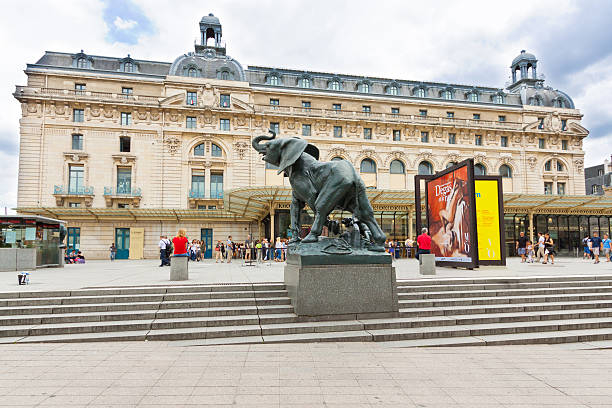
istockphoto 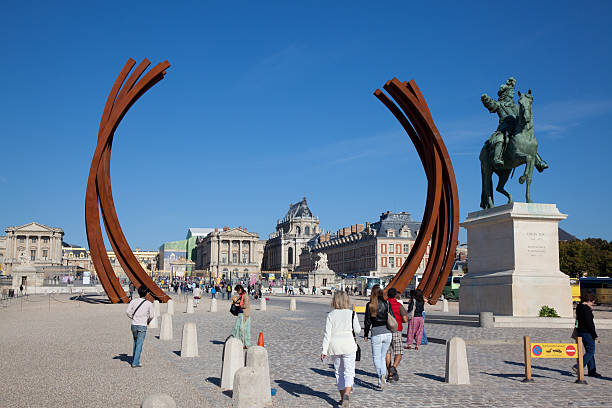
istockphoto -
The Prado Museum, formally known as Museo Nacional del Prado, is the primary national art museum of Spain, located in downtown Madrid. It is widely regarded as housing one of the world's finest collections of European art, extending from the 12th century to the early twentieth century, and the single outstanding collection of Spanish art. The Prado's collection of Spanish art is very spectacular and usually regarded as the greatest in the world. Visitors may see works by some of history's most famous artists, such as Velazquez, Goya, and Murillo. The Prado Museum, in addition to its amazing paintings, has a large collection of sculptures, tapestries, and other works of art.
Whether you're an art lover or just searching for a cultural experience, the Prado Museum is must-see. The Prado Museum in Madrid houses some of the most beautiful specimens of Spanish and European art. Francisco Goya, Hieronymus Bosch, El Greco, Peter Paul Rubens, Titian, and Diego Velázquez are among the most well-known artists represented.
The collection now includes over 8,200 drawings, 7,600 paintings, 4,800 prints, and 1,000 sculptures, as well as numerous other works of art and historical documents. As of 2012, the museum showed over 1,300 pieces in its main buildings, with approximately 3,100 works on temporary loan to other museums and public entities. The rest were in storage. Book the museum's skip-the-line guided tour for easy entry. The museum also has a considerable collection of work by Italian masters, owed in great part to Velázquez's efforts. The Prado Museum is a must-see for any art enthusiast visiting Madrid, with so much to see.
Location: C. de Ruiz de Alarcón, 23, 28014 Madrid, Spain
Website: https://www.museodelprado.es/en
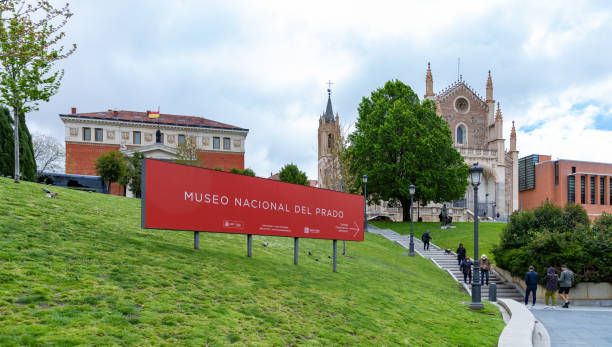
istockphoto 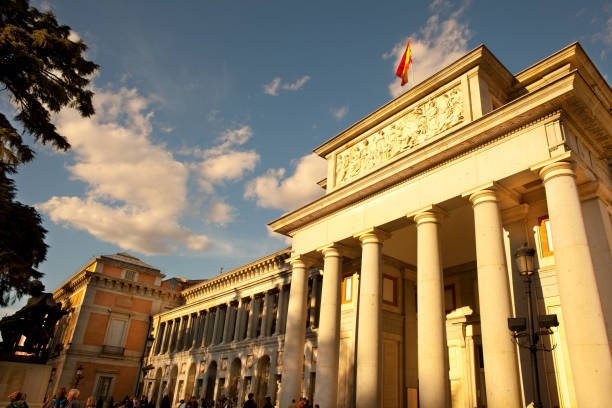
istockphoto -
The Natural History Museum in London houses a diverse collection of specimens from many fields of natural history. The Science Museum and the Victoria and Albert Museum are the other two main institutions on Exhibition Road in South Kensington. The Natural History Museum's main entrance, on the other hand, is on Cromwell Road.
The museum has 80 million specimens of life and earth science in five primary collections: botany, entomology, minerals, palaeontology, and zoology. The museum is a research facility that specializes in taxonomy, identification, and conservation. Given the institution's history, many of the collections, such as specimens gathered by Charles Darwin, have historical as well as scientific worth.
The museum is particularly well-known for its exhibition of dinosaur skeletons and ornate architecture—sometimes referred to as a cathedral of nature—both of which are exemplified by the large Diplodocus cast that once dominated the vaulted central hall before being replaced in 2017 by a blue whale skeleton suspended from the ceiling. The Natural History Museum Library has a large collection of books, periodicals, manuscripts, and artwork related to the scientific departments' work and study; admission to the library is by appointment only. The museum is widely regarded as the world's preeminent center of natural history and associated study.
The Natural History Museum, like other publicly financed national museums in the United Kingdom, does not charge admission. The museum is a non-departmental public entity supported by the Department for Digital, Culture, Media, and Sport. The museum is supported by the Princess of Wales. The museum employs roughly 850 people. The Public Engagement Group and the Science Group are the two most important strategic groupings.
Location: Cromwell Rd, South Kensington, London SW7 5BD, United Kingdom
Website: https://www.nhm.ac.uk
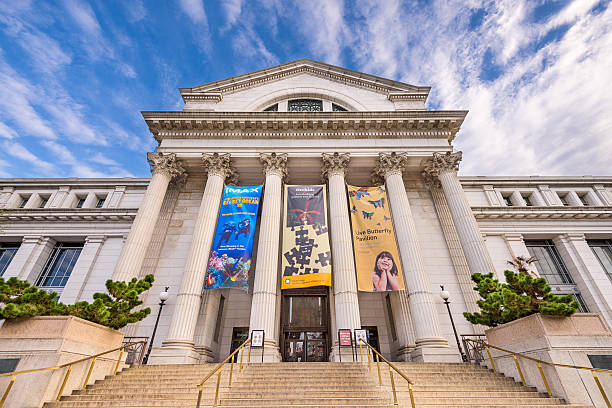
istockphoto 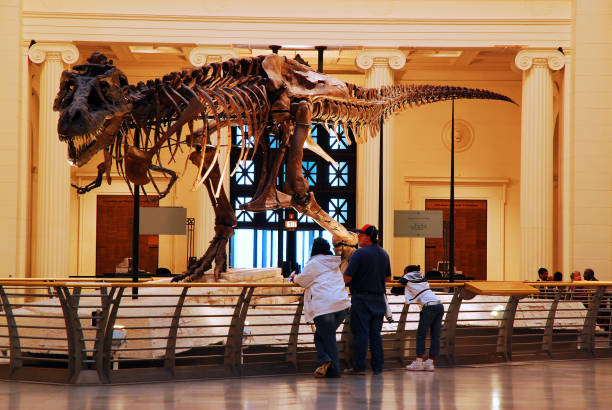
istockphoto -
The British Museum is a public museum in Bloomsbury, London, dedicated to human history, art, and culture. Its permanent collection of eight million pieces is one of the greatest and most extensive in the world. It tells the story of human civilization from its inception to the current day. The British Museum was the first public national museum in the world to span all areas of knowledge.
The British Museum was created in 1753, primarily on Sir Hans Sloane's professional and scientific collection. Montagu House (formerly Spencer House), which presently serves as the museum's headquarters, originally opened to the public on January 15, 1759. The British Museum is one of the largest museums in the world, with a collection spanning two million years of human history. From the Rosetta Stone to the Elgin Marbles, the museum holds some of humanity's most renowned relics. The British Museum is a popular tourist destination where visitors may learn about European history. The British Museum is a must-see if you're in London.
The museum opened in 1753, based primarily on the collections of Anglo-Irish physician and scientist Sir Hans Sloane. It initially opened to the public in 1759, at Montagu House, on the same site. The development of the museum during the next 250 years was primarily due to British colonisation, which resulted in the establishment of various branch institutions, or autonomous spin-offs, the first of which was the Natural History Museum in 1881. Some of its most well-known purchases, notably the Greek Elgin Marbles and the Egyptian Rosetta Stone, are the subject of long-running disputes and repatriation demands.
Location: Great Russell St, London WC1B 3DG, United Kingdom
Website: https://www.britishmuseum.org
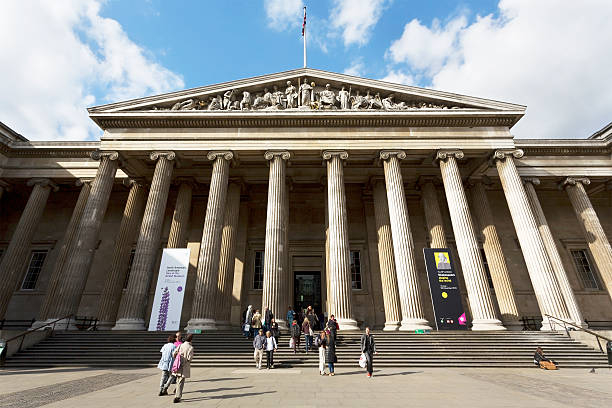
istockphoto 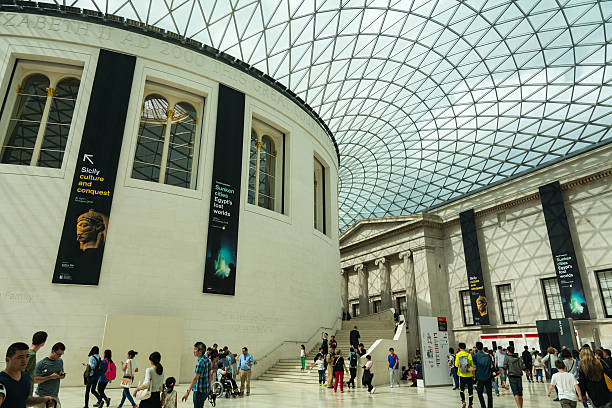
istockphoto -
The National Gallery is an art gallery located in Trafalgar Square, City of Westminster, Central London, England. It was founded in 1824 and has been located in Trafalgar Square since 1838, housing a collection of nearly 2,300 artworks from from the mid-13th century to 1900. Gabriele Finaldi is the current Director of the National Gallery. The National Gallery is a non-departmental public body of the Department for Digital, Culture, Media, and Sport and an exempt charity. Its collection is owned by the government on behalf of the British people, and admission to the main collection is free.
The National Gallery, unlike analogous museums in continental Europe, was not founded by nationalizing an existing royal or princely art collection. In 1824, the British government purchased 38 paintings from the heirs of John Julius Angerstein. Following that original purchase, the Gallery was primarily formed by its early directors, particularly Charles Lock Eastlake, and by individual contributions, which today account for two-thirds of the collection. The collection is smaller than that of many European national galleries, but it is encyclopedic in breadth; notable works from most key trends in Western painting "from Giotto to Cézanne" are included. It used to be claimed that this was one of the few national galleries that had all its works on permanent exhibition, but this is no longer the case.
The National Gallery houses a large collection of artworks by Leonardo da Vinci, Michelangelo, and Vincent van Gogh. The Gallery is simple to visit, free to the public, and offers an educational museum tour, making it an excellent choice for budget-conscious visitors. Furthermore, the Gallery is located in the center of London, making it convenient to visit whether you live in the city or are simply traveling through.
Location: Trafalgar Square, Westminster, London WC2N 5DN, United Kingdom
Website: https://www.nationalgallery.org.uk
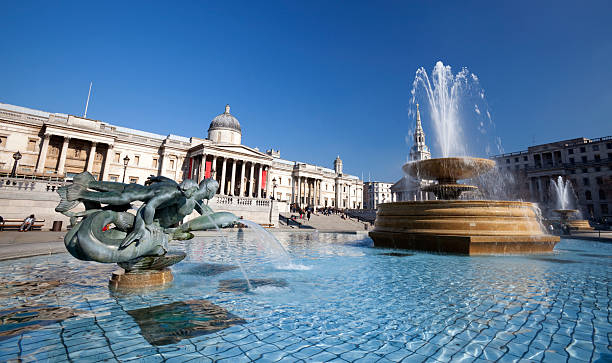
istockphoto 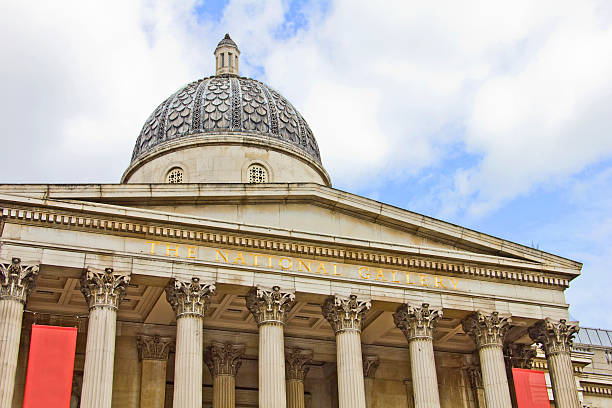
istockphoto -
The Uffizi Gallery is a notable art museum in the Historic Centre of Florence, Tuscany, Italy, near to the Piazza della Signoria. It is one of the most significant and frequented museums in Italy, as well as one of the largest and best renowned in the world, and it has a magnificent collection of works, notably from the Italian Renaissance period.
After the governing House of Medici died out, its art collections were donated to the city of Florence through the famous Patto di famiglia, which was negotiated by Anna Maria Luisa, the last Medici heiress. One of the first modern museums was the Uffizi. The gallery has been available to visitors on request since the sixteenth century, and it was officially opened to the public in 1765, before becoming a museum in 1865. Because of its huge collection, some of the Uffizi's works have in the past been transferred to other museums in Florence—for example, some famous statues to the Bargello.By late 2016, the New Uffizi significant remodeling project has boosted viewing capacity to 101 rooms by extending into premises previously utilized by the Florence State Archive. Remote viewing of works from the Uffizi gallery collection is now available on Google Arts and Culture. Following a restoration that includes the installation of 14 new rooms and the presentation of an extra 129 artworks, the museum reopened in May 2021, with the museum seeking to give more voice to historically overlooked groups such as women and people of color.
The Uffizi Gallery is a must-see for anybody interested in the Italian Renaissance, as well as for those looking to view some of the world's most recognizable artworks. The museum is simple to see and compact, making it an excellent choice for visitors with limited time in Florence.
Location: Piazzale degli Uffizi, 6, 50122 Firenze FI, Italy
Website: https://www.uffizi.it/en/the-uffizi
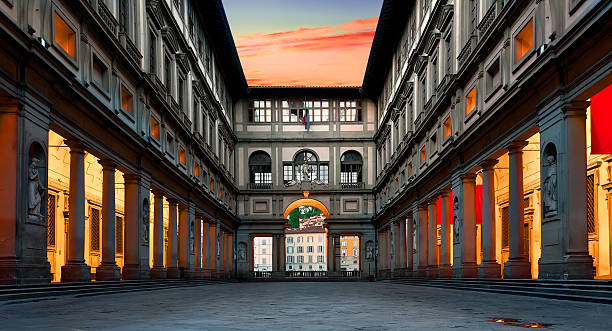
istockphoto 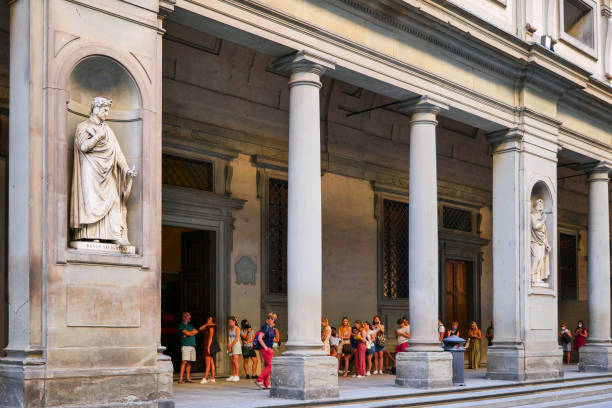
istockphoto -
Stockholm, Sweden's Vasa Museum is a marine museum. The museum, located on the island of Djurgrden, has the only almost entirely intact 17th-century ship ever rescued, the 64-gun battleship Vasa, which sunk on her maiden voyage in 1628. The Vasa Museum, which opened in 1990, is the most visited museum in Scandinavia, according to its official website. It is part of the Swedish National Maritime Museums, together with other museums such as the Stockholm Maritime Museum (SNMM).
The main hall houses the ship as well as several displays linked to the ship's archaeological discoveries and early 17th-century Sweden. Vasa now has the bottom sections of all three masts, a new bowsprit, winter rigging, and some missing or seriously damaged elements restored. The new components haven't been cleaned or painted, so they stand out against the original material, which has darkened after three centuries under water.
The new museum is dominated by a huge copper ceiling with stylised masts representing Vasa's true height when fully rigged. Parts of the structure are coated with dark red, blue, tar black, ochre yellow, and dark green painted wooden panels. The inside is similarly embellished, with enormous portions of raw, unpainted concrete, including the whole ceiling, being used. The ship may be seen from six different perspectives inside the museum, from the bottom to the very top of the sterncastle. Throughout the ship, there are several exhibits and replicas depicting the ship's construction, sinking, location, and recovery. There are other displays that provide background information on the ship's construction and the history of Sweden in the 17th century. A cinema theater presents a film in alternating languages on the Vasa's recovery.The Vasa Museum is a must-see for anybody visiting Stockholm and is regarded as one of Europe's top museums. The Vasa Museum is open daily from 10 a.m. to 5 p.m. The museum will be closed on December 24th and 25th. If you enjoyed what you read, purchase your Vasa Museum admission ticket right away.
Location: Galärvarvsvägen 14, 115 21 Stockholm, Sweden
Website: https://www.vasamuseet.se/en
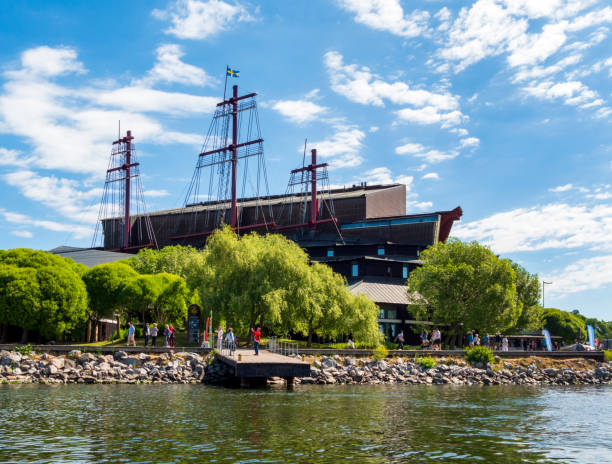
istockphoto 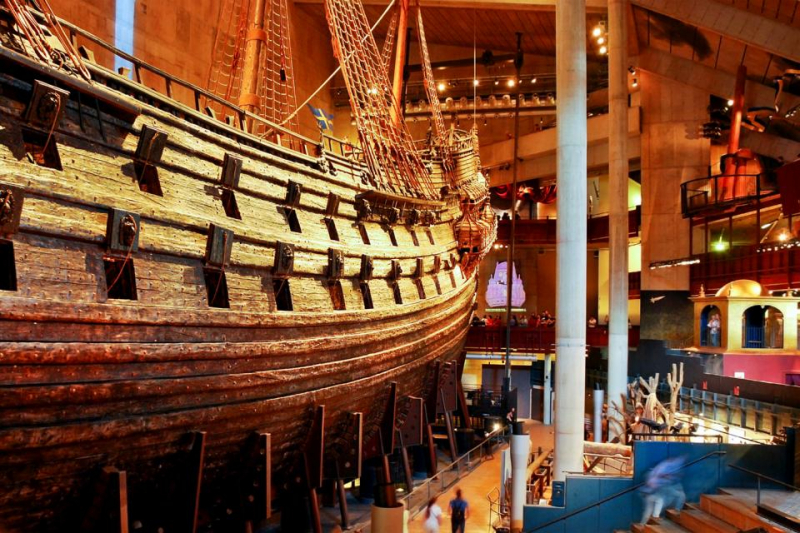
istockphoto -
The Rijksmuseum is the Netherlands' national museum dedicated to Dutch arts and history, located in Amsterdam. The Rijksmuseum is located in the Amsterdam South district, just across from the Van Gogh Museum, Stedelijk Museum Amsterdam, and Concertgebouw. The Rijksmuseum is one of Amsterdam's most well-known attractions, housing a collection of Dutch art and history. Pierre Cuypers designed the current main structure, which opened in 1885. It was the most visited museum in the Netherlands in 2013 and 2014, with 2.2 million and 2.47 million visitors, respectively. It is also the country's largest art museum.
The Rijksmuseum's enormous collection of paintings, sculptures, and other works of art may be explored by visitors. For visitors of all ages, the Rijksmuseum also provides a range of educational activities and events. The Rijksmuseum in Amsterdam includes one of the world's most extensive collections of art and artifacts from the 11th to the 21st centuries. More than 8,000 artifacts are on show in the museum, ranging from Rembrandt paintings and Frans Hals portraits to Johannes Vermeer masterpieces and a modest Asian collection located in the Asian pavilion.
The Rijksmuseum is a must-see for both history and art fans. Make a point of visiting this world-renowned museum if you're ever in Amsterdam. The Rijksmuseum is open Monday through Friday from 9 a.m. to 5 p.m., with extended hours on Friday and Saturday. The museum is closed on the following dates: January 1st, May 1st, and December 25th.
Location: Museumstraat 1, 1071 XX Amsterdam, Netherlands
Website: https://www.rijksmuseum.nl/en
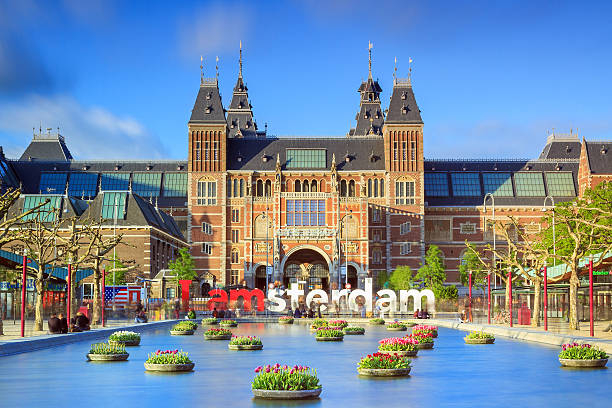
istockphoto 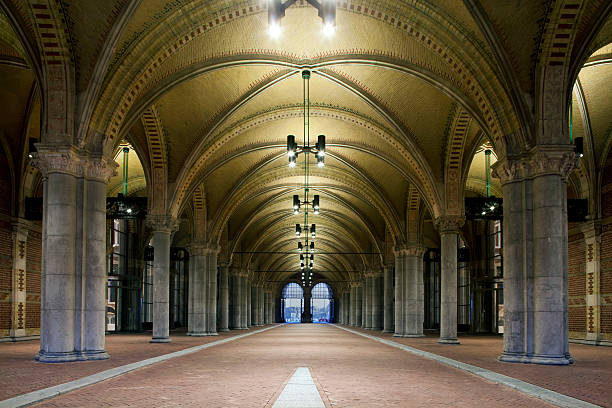
istockphoto -
The Van Gogh Museum is a Dutch art museum in Amsterdam South dedicated to the works of Vincent van Gogh and his contemporaries. It is located near the Stedelijk Museum, the Rijksmuseum, and the Concertgebouw. Gerrit Rietveld and Kisho Kurokawa designed the museum's structures, which opened on June 2, 1973. The museum houses the world's biggest collection of Van Gogh's paintings and sketches. In 2017, the museum attracted 2.3 million visitors, making it the most visited museum in the Netherlands and the world's 23rd most visited art museum. The Meet Vincent Van Gogh Experience, a technology-driven "immersive exhibition" on Van Gogh's life and works, debuted in 2019 at the Van Gogh Museum and has since travelled internationally.
The museum has the world's biggest collection of Van Gogh's works. The museum drew 2.3 million visitors in 2017 and was the most-visited tourist destination in the Netherlands, as well as the world's 23rd most-visited art museum. The Van Gogh Museum is one of Amsterdam's most renowned attractions and a must-see for art aficionados visiting the city. Gerrit Rietveld designed the original building, which opened in 1973. The primary exposition hall was housed in a trapezoid-shaped courtyard surrounded by a white square structure.
Kisho Kurokawa developed a new wing for the structure later on. The new wing, which debuted in 1999, is a glass and concrete building resembling a cluster of greenhouses. The Van Gogh Museum draws over two million visitors each year and has the world's biggest collection of Vincent van Gogh paintings. If you like Vincent van Gogh or just like art, the Van Gogh Museum is a must-see. The museum is open from 9 a.m. to 5 p.m. (8 p.m. on Fridays) and is closed on Christmas Day.
Location: Museumplein 6, 1071 DJ Amsterdam, Netherlands
Website: https://www.vangoghmuseum.nl/en
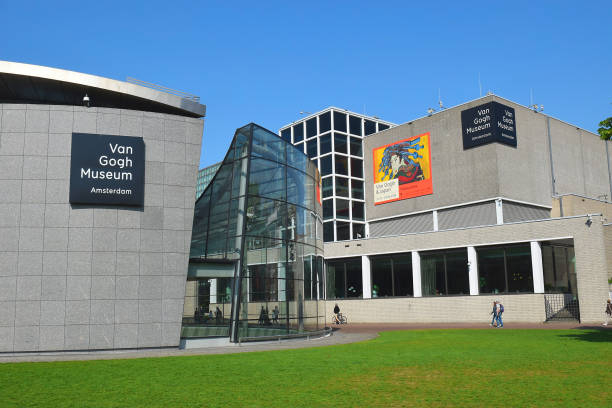
istockphoto 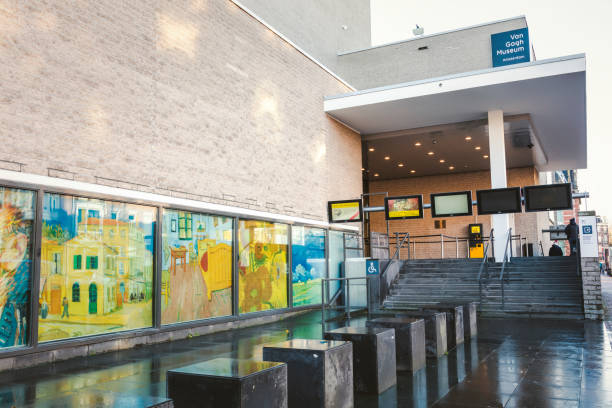
istockphoto -
The Vatican Museums are the Vatican City's public museums. They exhibit works from the vast collection gathered by the Catholic Church and the pope throughout the ages, including many of the world's most well-known Roman statues and most important Renaissance masterpieces. The museums house over 70,000 items, 20,000 of which are on exhibit, and employ 640 employees in 40 administrative, academic, and restoration departments. Due to the COVID-19 epidemic, just 1,300,000 people visited the Vatican Institutions in 2020, a decline of 81 percent from the previous year, but still enough to place the museums fourth among the world's most-visited art museums.
In October 2006, the museums marked their 500th anniversary by permanently exposing the excavations of a Vatican Hill necropolis to the public. Barbara Jatta took over as Director of the Vatican Museums on January 1, 2017, succeeding Antonio Paolucci, who had been in charge since 2007.
The Museum has 24 galleries or rooms in total, with the Sistine Chapel being the final chamber examined. Michelangelo's major paintings in the Sistine Chapel include the Creation of Adam and God Creating Adam. The Raphael Rooms, which were decorated by Raphael and his studio, and the Borgia Apartments, which were adorned by Cesare Borgia, are two more important galleries. The Vatican Museums are accessible daily except Sunday, and entry includes access to the Sistine Chapel. Saturdays are the busiest days for museums, so go during the week if feasible.
Location: 00120 Vatican City
Website: https://www.museivaticani.va/content/museivaticani/en.html
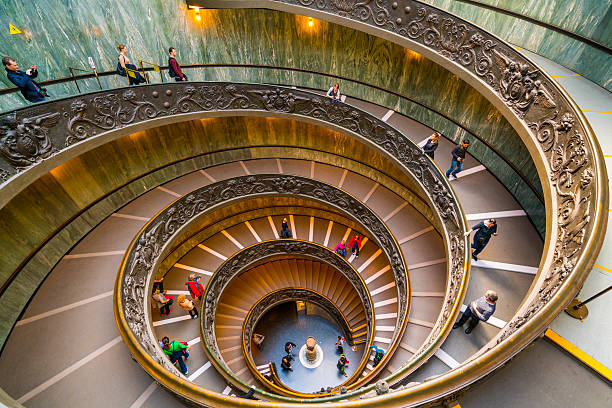
istockphoto 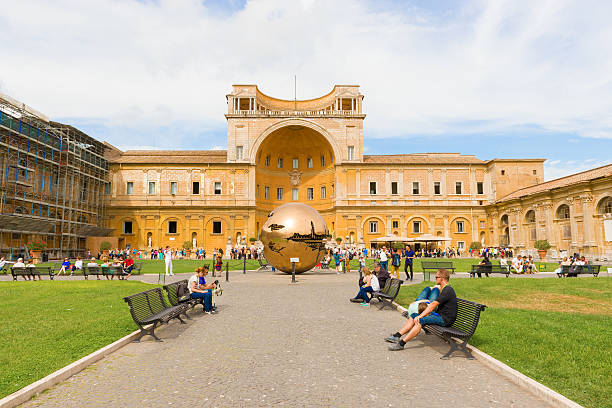
istockphoto -
The Anne Frank House (Dutch: Anne Frank Huis) is a writer's home and biographical museum devoted to Jewish diarist Anne Frank during World War II. The structure is located near the Westerkerk on the Prinsengracht canal in downtown Amsterdam, Netherlands. During WWII, Anne Frank, her family, and four other individuals hid from Nazi persecution in concealed apartments at the back of the 17th-century canal house, afterwards known as the Secret Annex. She died during the war, but her journal was published in 1947. The Anne Frank Foundation was founded ten years later to defend the property from developers who intended to destroy the block.
The museum first opened its doors on May 3, 1960. It protects the hiding site, features a permanent display about Anne Frank's life and times, and an exhibition area concerning all types of persecution and intolerance. The museum drew 1.2 million visitors in 2013 and 2014, making it the third most visited museum in the Netherlands behind the Rijksmuseum and the Van Gogh Museum.
The Anne Frank Foundation was founded on 3 May 1957 in collaboration with Anne Frank's father, Otto Frank, with the primary goal of raising enough finances to acquire and repair the building. The building was presented to the Foundation as a goodwill gesture by the corporation that owned it in October of that year. The monies raised were subsequently utilized to purchase the home next door, Number 265, shortly before the remaining structures on the block were demolished as planned. In 1960, the structure was opened to the public as a museum. The museum is open from 9 am to 5 pm (from 8 pm from April to October) and is closed on December 25th. Admission is €9 for adults, €4.50 for children aged 10-17, and free for children under 10.
Location: Westermarkt 20, 1016 GV Amsterdam, Netherlands
Website: https://www.annefrank.org/en
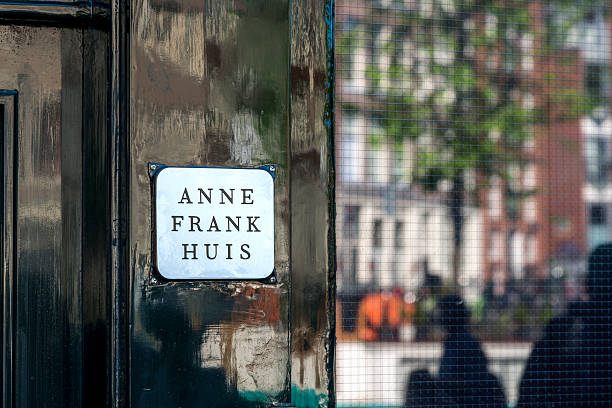
istockphoto 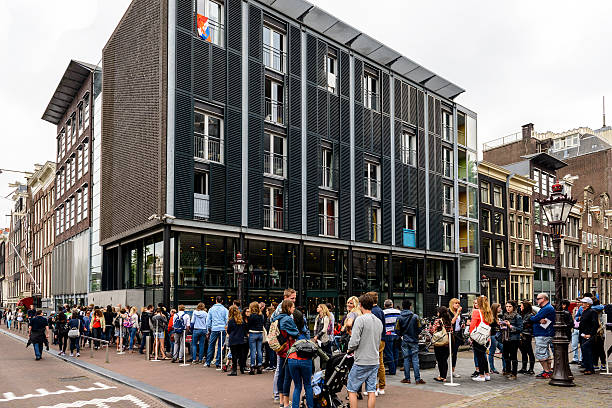
istockphoto -
The Guggenheim Museum Bilbao, created by Canadian American architect Frank Gehry, is a world-renowned museum of modern and contemporary art. The museum, which is located in Bilbao, Basque Country, Spain, was inaugurated on October 18, 1997, by King Juan Carlos I of Spain, with an exhibition of 250 contemporary works of art.
It is one of numerous museums owned by the Solomon R. Guggenheim Foundation and is located near the Nervion River, which goes through Bilbao to the Cantabrian Sea. The museum's collection consists primarily of post-World War II painters, although it also includes works by early twentieth-century luminaries such as Pablo Picasso, Henri Matisse, and Alberto Giacometti. The museum also has a substantial collection of works by Basque painters such as Eduardo Chillida and Jorge Oteiza.
The Guggenheim Museum Bilbao contains permanent and traveling exhibits of works by Spanish and international artists, making it a must-see destination for art lovers. A skip-the-line tour is also available at the museum. The museum's building is widely considered as a modern architectural marvel. The building has been lauded as a "signal moment in the architectural culture" because it marks "one of those rare instances when critics, academia, and the general public were all on the same page". The museum is open from 10 a.m. to 7 p.m. Tuesday through Sunday. Adult admission is €13, students and pensioners pay €8, and children under the age of 16 are free.
Location: Abandoibarra Etorb., 2, 48009 Bilbo, Bizkaia, Spain
Website: https://www.guggenheim-bilbao.eus/en
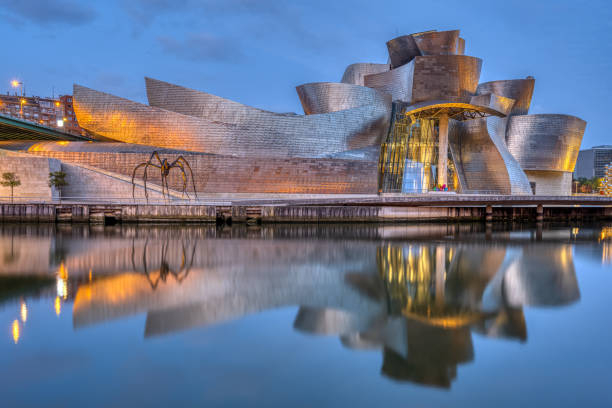
istockphoto 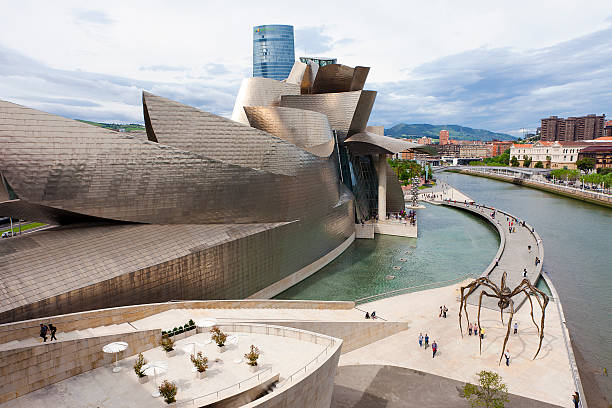
istockphoto -
Spain's national museum of twentieth-century art is the Museo Nacional Centro de Arte Reina Sofia. The museum, named after Queen Sofia, was officially opened on September 10, 1992. It is located near the Atocha train and metro stations in Madrid, at the southern extremity of the so-called Golden Triangle of Art (located along the Paseo del Prado and also comprising the Museo del Prado and the Museo Thyssen-Bornemisza). The museum focuses mostly on Spanish art. The museum's highlights include exceptional collections of Pablo Picasso and Salvador Dal, two of Spain's finest 20th-century masterpieces.
Picasso's 1937 artwork Guernica is the museum's most recognized masterpiece. Along with its rich collection, the museum's various galleries host a mix of national and international temporary exhibits, making it one of the world's major museums for modern and contemporary art. Due to COVID-19 pandemic limitations, it received 1,643,108 visitors in 2021, up 32% from 2020 but well below 2019 attendance. It was rated seventh on the list of the world's most visited art museums in 2021. It also has a free-access art library with a collection of over 100,000 books, 3,500 sound recordings, and almost 1,000 movies.
Among the Spanish painters featured in this museum's collection are Joan Miró, Salvador Dal, Antoni Tàpies, and Equipo Crónica. Paintings, sculptures, prints, photos, and installations by some of Spain's most prominent artists of the twentieth century, such as Joan Miró, are among the works on display. The museum is open from 10 a.m. to 7 p.m. (9 p.m. on Thursdays), except on Mondays. Adult admission is €10, students and pensioners are €6, and children under the age of 16 are free.
Location: C. de Sta. Isabel, 52, 28012 Madrid, Spain
Website: https://www.museoreinasofia.es
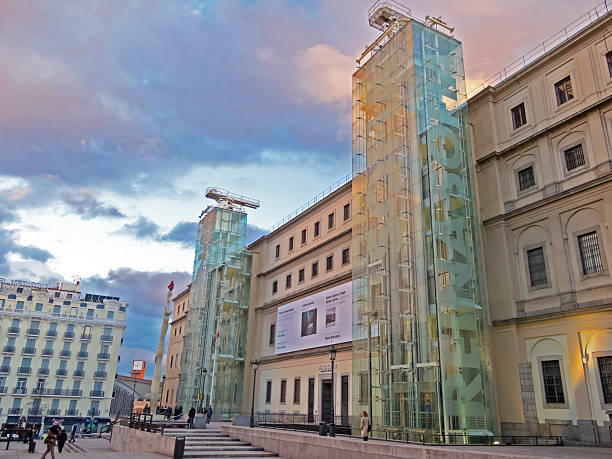
istockphoto 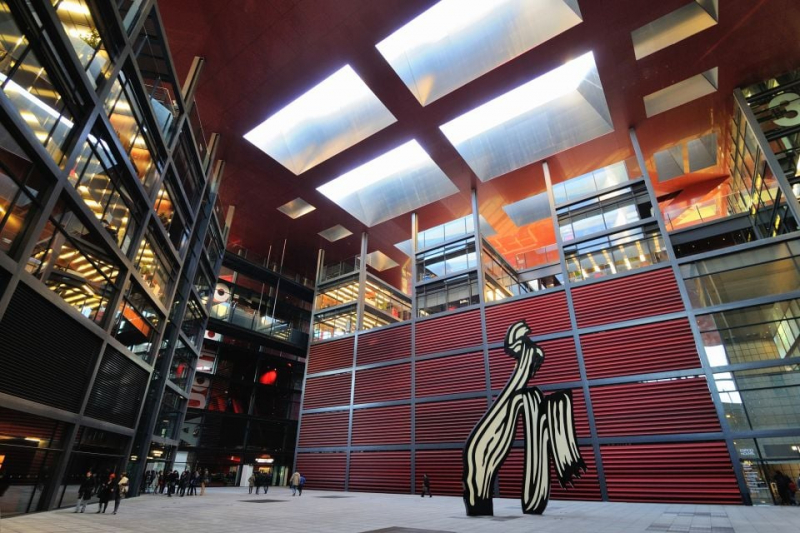
istockphoto

















